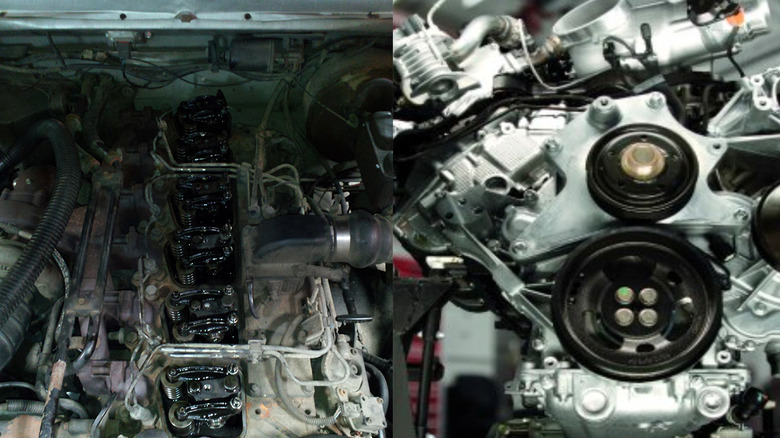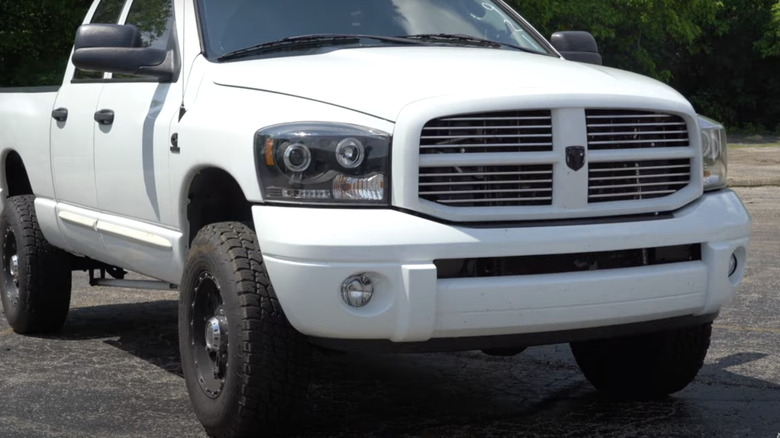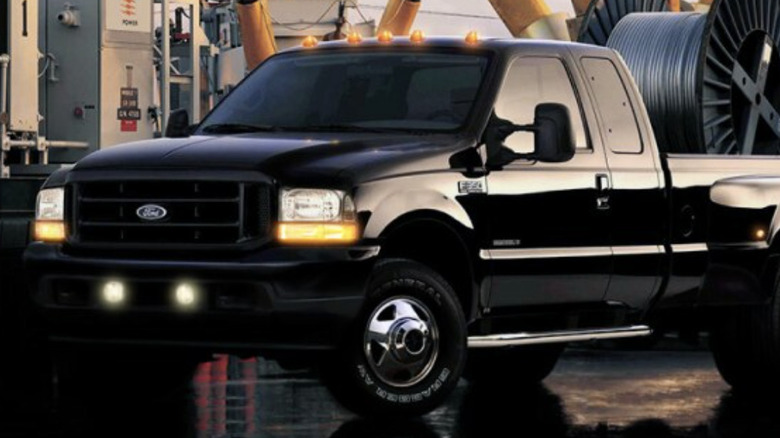5.9 Cummins Vs. 7.3 Power Stroke: How Do These Diesel Engines Compare?
Diesel engines have gained ground on their gas-fueled counterparts in recent years thanks in part to diesel's greater efficiency and the ample torque those engines produce. Diesel engines are common in pickup trucks, like the Cummins 6.7- and 5.9-liter engines that power some Ram trucks. Ford and Navistar teamed up to bring the venerable 7.3-liter Power Stroke diesel to the Blue Oval's trucks beginning in 1994, and the 7.3 enjoyed a nine-year stretch as the stalwart of Ford's diesel truck lineup.
The Cummins 5.9 and Power Stroke 7.3 both benefit from the presence of a turbocharger, a feature that is present on the majority of modern diesel engines. That commonality and their use in some of America's most popular pickup trucks aren't the only similarities between these two engines, though. Let's see how they compare in terms of performance specs, known issues, and expected lifespan.
[Featured image by Dana60Cummins via Wikimedia Commons and Ford | Cropped and Scaled |CC BY-SA 3.0]
The 5.9L Cummins was more powerful than the 7.3L Power Stroke
The most important benchmarks when comparing engines are horsepower and torque. These standardized measurements allow us to compare everything from lawnmowers and snowmobiles to race cars and semi-trucks, so let's see how the outputs of the 5.9 Cummins and 7.3 Power Stroke diesel engines compare. The Cummins 5.9 produced 160 horsepower and 400 lb-ft of torque from 1989 through 1993, and grew steadily more powerful over the years. Its last update in 2004 pushed output to 325 horsepower and 610 lb-ft of torque.
The 7.3 Power Stroke made 210 horsepower and 425 lb-ft of torque in its first year of 1994, and like the 5.9 Cummins, the 7.3 Power Stroke made gains in both respects as it aged. By the end of its run in 2003, output was up to 275 horsepower and 525 lb-ft of torque. In addition to being more powerful than its larger counterpart, the 5.9 Cummins enjoyed a longer production run than the 7.3 Power Stroke. It stayed under the hoods of Ram trucks through 2007, giving it an 18-year lifespan that exactly doubled that of its rival.
Although you can no longer buy either engine in a new truck, Ford sells remanufactured 7.3 Power Stroke engines through its dealership network and backs them with a two-year warranty with no mileage limit. Cost will vary by location, but our local dealer's quoted price for a remanufactured long-block Power Stroke 7.3 was just under $13,000 plus a $3,200 core charge.
Both engines have well-documented issues
While the 5.9 Cummins and 7.3 Power Stroke diesel engines both enjoy stellar reputations among owners, they have each been plagued by serious issues during their time on the road. The most notable problem with the Cummins engine is what's become known as the "Killer Dowel Pin," where the timing cover alignment peg works itself loose from the cylinder head and wreaks havoc on the engine. This was more often a problem for engines made before 2002 and can be remedied with a Killer Dowel Pin Repair Kit from Amazon. The kit includes a reversible retainer and a socket head screw to replace the stock pin for just $8.99, but it is a bit tedious and time-consuming to install.
Documented problems with the 7.3 Power Stroke are a bit more comprehensive, and proliferated largely from 2001 and beyond. That's when the 7.3 Power Stroke became notorious for producing excessive noise, a fault some blame on Ford's split-shot fuel injectors. Over the next couple of years, the engine also developed a tendency to suffer failures of the camshaft position sensor, fuel filter housing, and exhaust back pressure sensor.
Despite these issues, many owners report getting well over 300,000 miles out of their 7.3 Power Stroke engines. Cummins 5.9 engines can easily go that long or longer. The company has organized a High Mileage Club that boasts more than 100 members who claim to have put more than a million miles on their trucks.


